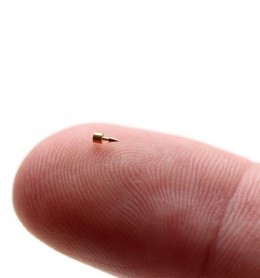Complementary and Alternative Medicine

The 2016 CDC Guideline for Prescribing Opioids for Chronic Pain and the 2019 Pain Management Best Practices Inter-Agency Task Force Report [PDF - 5.7 MB] includes strong recommendations to clinicians to utilize non-pharmacologic integrative approaches, such as acupuncture, as first-line treatment for the management of both acute and chronic pain. These practices are also included in the IHS Opioid Stewardship workbook [PDF - 1.1 MB]. Many people use health care approaches considered to be outside of mainstream Western or conventional medicine for specific conditions, overall health maintenance, and/or well-being, often along with conventional treatments. The boundaries between complementary and conventional medicine often overlap and change over time. For example, guided imagery and massage, both once considered complementary or alternative, are used regularly in some hospitals to help with pain management. Other approaches include deep breathing, yoga, tai chi, qigong, chiropractic or osteopathic manipulation, meditation, special diets, homeopathy, and progressive relaxation. The NIH's National Center for Complementary and Integrative Health (NCCIH) generally uses the term "complementary health approaches" when discussing these practice approaches as well as other non-pharmaceutical products used for various health conditions, such as essential oils, sage, etc.
Integrative Therapy Treatments:
- Massage and Deep Tissue Mobilization to target spasms and chronic muscle tension
- Manipulation of joints and bones
- Manual therapy using hands or tools on soft tissue
- Modalities of electrical nerve and muscle stimulation
- Ultrasound
- Cold laser therapy to alleviate inflammation and pain and release endorphins
- Microcurrent stimulation to alleviate pain
- Movement therapy and exercise: Therapists will teach various exercises to improve flexibility, strength, core stability, endurance, and range of motion.
IHS Focused Auricular Acupuncture Protocol
Results from a number of studies suggest that acupuncture may help ease types of pain that are often chronic such as low-back pain, neck pain, and osteoarthritis/knee pain with minimal safety risk. Studies also suggest that acupuncture may help reduce the frequency of tension headaches and prevent migraine headaches.
The IHS has partnered with the Veterans Health Administration (VHA) to utilize the innovation of the Defense and Veterans Center for Integrative Pain Management (DVCIPM). The DVCIPM auricular acupuncture model is titled ‘Battlefield Acupuncture’ and includes an inter-professional training component as well stepped-care models. The IHS has adopted this specific protocol and training platform as a low-risk, integrative pain management treatment.
Acupuncture Resources:
- Sample Focused Acupuncture Protocol [DOC - 23 KB]
- Sample Clinical Privileges Form [DOC - 20 KB]
- Sample Patient Education Sheet [PDF - 2.3 MB]
- EHR template available upon request
- Pain and Opioid Use Disorder Training page


